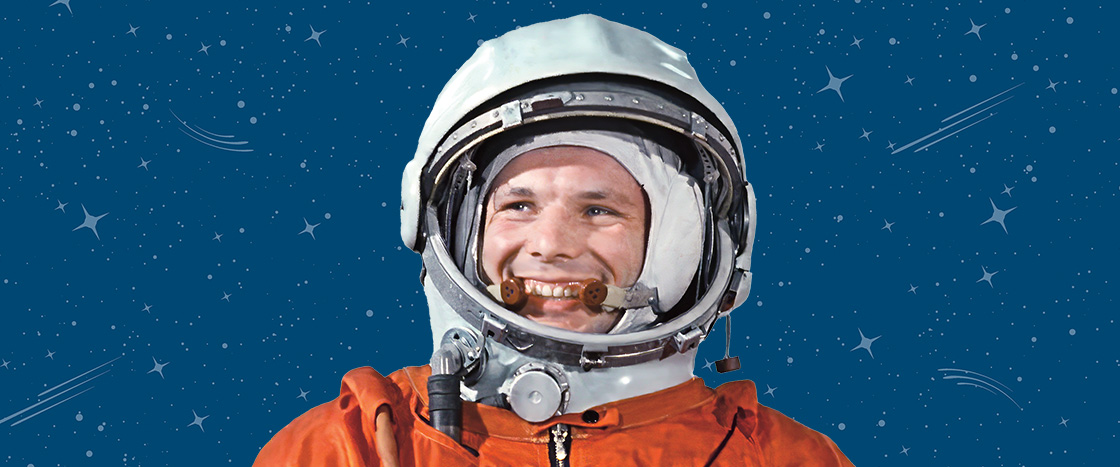ITAR-TASS Photo Agency/Granger, NYC
Yuri Gagarin was the first person in space.
He was sent by a country called the Soviet Union. The president of the United States decided to send Americans to space too.

You are going to read about astronauts who went to space. Here are five facts to know first.
Learning Objective: Give students background knowledge about space and astronauts before they read “Space Rescue.”
1. In 1961, a person went to space for the first time.
ITAR-TASS Photo Agency/Granger, NYC
Yuri Gagarin was the first person in space.
He was sent by a country called the Soviet Union. The president of the United States decided to send Americans to space too.
2. Americans started a big project to send people to space.
Science History Images/Alamy Stock Photo
Mercury spacecraft, 1961
The first American went to space on May 5, 1961. Soon more Americans were going to space. Scientists studied how a spacecraft could circle Earth and what humans needed to stay alive in space. A spacecraft is a vehicle that flies in space.
3. As time went on, scientists learned more about space travel.
the first astronaut to do a spacewalk
Heritage Space/Heritage Images via Getty Images
They learned how astronauts could spend more time in space. They got better at landing spacecraft. They learned how a person could walk in space!
4. In 1969, the U.S. sent astronauts to the moon for the first time. An Adventure
Bettmann Archive/Getty Images
moon walk in 1969
The astronauts brought back space rocks and soil from the moon. Scientists learned so much about the moon that way.
4. On April 11, 1970, a spacecraft blasted off for the moon.
It was called Apollo 13. Three astronauts were on board. Their trip did not go as planned. Read what happened in . . .
Implementation
Pairings and Text Connections
Before-Reading Resources
Suggested Reading Focus
Comprehension, nonfiction text features (30 minutes)
After-Reading Skills Practice
(15 minutes for each activity)
After-Reading Text Comparisons
(15 minutes)